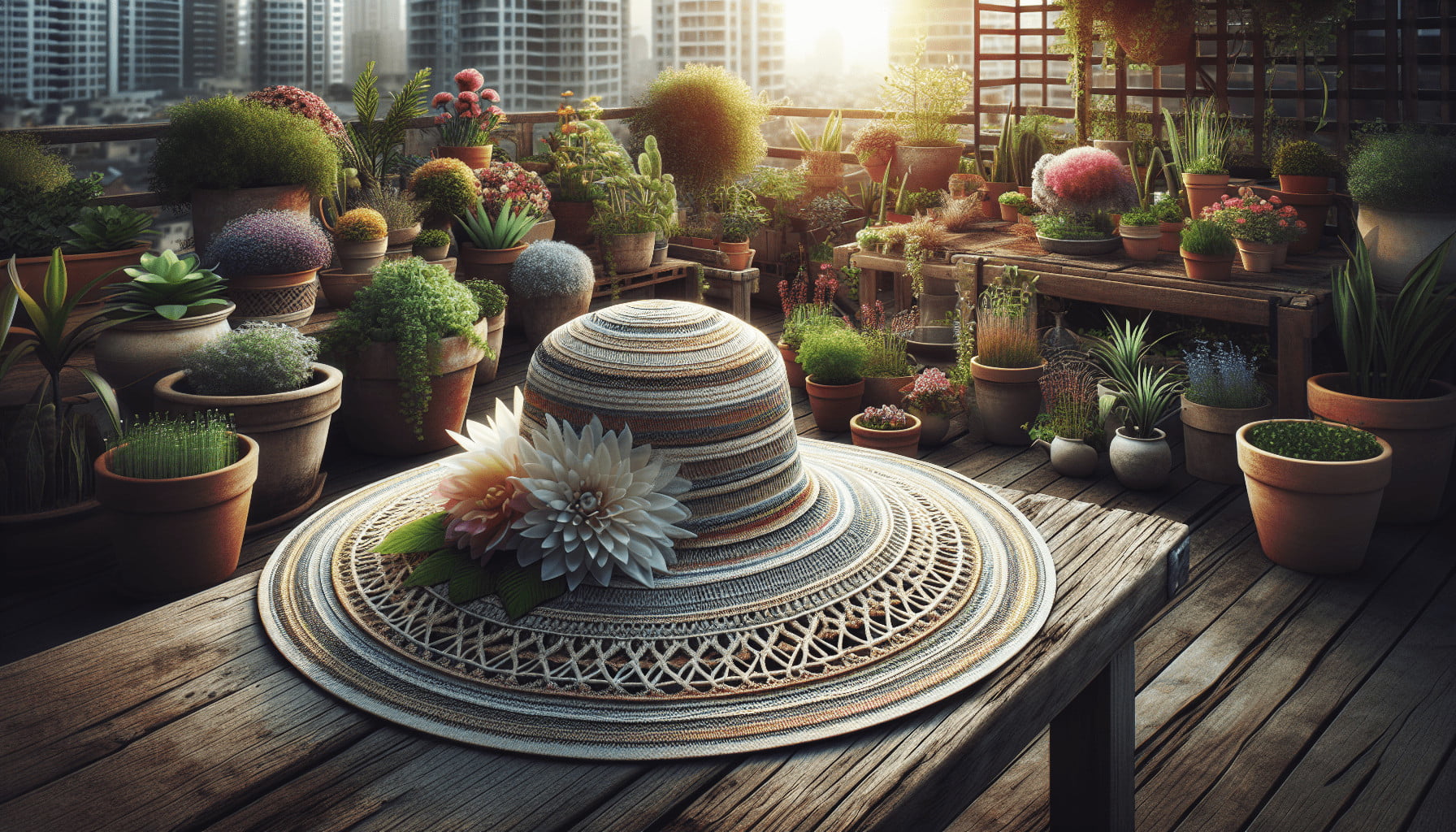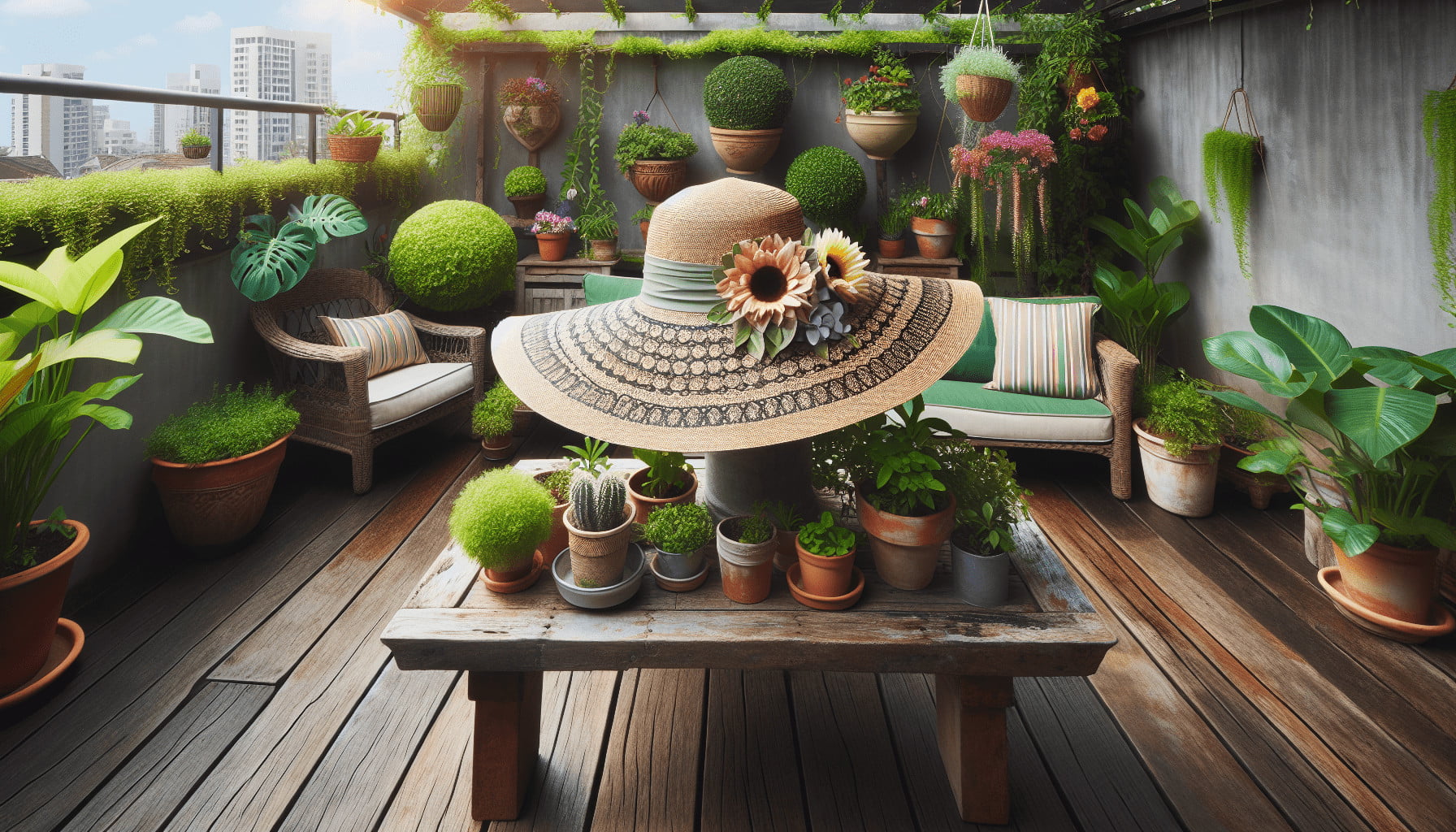Welcome to your ultimate guide to choosing the right sun protection for rooftop gardeners. This guide covers everything from selecting the best shade cloth to understanding UV ratings, ensuring your rooftop garden remains both beautiful and bountiful. Whether you’re a seasoned gardener or just starting out, you’ll find valuable insights to create a flourishing oasis under the sun. Have you ever spent hours cultivating your rooftop garden only to find that your plants are struggling under the intense sun? You’re not alone. Rooftop gardening comes with its unique set of challenges, especially when it comes to sun protection.
In this guide, you will find everything you need to keep your plants thriving under the harsh sun, from understanding the types of UV rays that harm your plants to selecting the right materials for sun protection, and various innovative solutions to keep your garden flourishing.
Understanding UV Rays and Their Impact on Plants
What are UV Rays?
To begin with, let’s clarify what UV rays are. Ultraviolet (UV) rays are a type of electromagnetic radiation that comes from the sun. They are categorized into three types: UVA, UVB, and UVC. While UVC rays are absorbed by the earth’s atmosphere, UVA and UVB rays reach us.
How UV Rays Affect Plants
UV rays can be both beneficial and harmful to plants. While some level of sun exposure is essential for photosynthesis, excessive UV radiation can damage the cellular structure of plants. This can lead to:
- Reduced Growth: Too much UV radiation can stunt plant growth and delay flowering.
- Leaf Damage: The most common sign of UV damage is sunburnt or scorched leaves.
- Nutrient Loss: Excessive UV exposure can lead to the loss of essential nutrients, making plants weaker.
Understanding these effects will help you make informed decisions about sun protection for your rooftop garden.
Types of Sun Protection for Rooftop Gardens
Natural Shade Solutions
Sometimes, Mother Nature provides the best solutions. Using natural elements like trees, tall plants, or shrubs can offer you the perfect shade.
Advantages:
- Environmentally friendly.
- Adds aesthetic value.
- Helps in creating a natural ecosystem.
Disadvantages:
- Takes time to grow.
- Not always suitable for all kinds of plants or rooftop spaces.
Artificial Shade Options
Artificial sun protection is often quicker and more versatile. Here are some common options:
- Shade Cloths
Shade cloths come in various materials and shading percentages, ranging from 30% to 90% shade.
Shade Percentage Suitable For 30-50% Succulents, cacti 50-70% Vegetables, herbs 70-90% Ferns, shade-loving plants Pros:
- Customizable shading.
- Durable and easy to install.
Cons:
- May need seasonal adjustments.
- Can be unattractive if not installed neatly.
- Pergolas and Trellises
Pergolas and trellises can provide a beautiful framework for climbing plants, offering natural shade.
Pros:
- Supports climbing plants.
- Aesthetic and durable.
Cons:
- Can be expensive.
- Requires robust structural support.
- Umbrellas and Canopies
Umbrellas and canopies are portable and can be adjusted to provide shade where needed.
Pros:
- Flexible and lightweight.
- Easy to set up and adjust.
Cons:
- Requires regular adjustments based on the sun’s position.
- Limited coverage area.

Factors to Consider When Choosing Sun Protection
Climate Conditions
The climate in your area significantly affects your choice of sun protection. If you live in a hotter climate with intense sun, you may need higher shading percentages compared to someone in a milder climate.
Type of Plants
Different plants have different sun tolerance levels. Succulents may thrive with minimal shade, while ferns may require more extensive protection.
| Plant Type | Sun Tolerance | Recommended Shade |
|---|---|---|
| Succulents | High | 30-50% |
| Vegetables | Moderate | 50-70% |
| Ferns | Low | 70-90% |
Budget
Your budget is another critical factor. While a DIY shade cloth can be inexpensive, building a pergola might be a substantial investment. Align your choices with your budget constraints.
Aesthetic Preferences
Sun protection should not only be functional but also complement the aesthetics of your rooftop garden. Materials, colors, and designs should match your garden theme and personal preferences.
DIY Sun Protection Solutions
Sometimes, a DIY approach can be both cost-effective and rewarding. Here are some do-it-yourself sun protection ideas:
Homemade Shade Cloth
Create a custom shade cloth using old bed sheets, burlap, or even an old parachute. Attach it to wooden posts or metal frames to cover your plants.
Materials Needed:
- Old bed sheets or burlap.
- Scissors and measuring tape.
- Zip ties or rope for securing.
Recycled Materials
Use recycled materials like old crates, window screens, or bamboo mats. These can be creatively arranged to provide both sun protection and a rustic look to your garden.
Materials Needed:
- Old wooden crates or window screens.
- Zip ties or nails.
- Measuring tape.
Vertical Gardening
Vertical gardening not only maximizes space but can also provide shade for plants below. Use shelves, pallets, or vertical planters to create a multi-layered garden.
Materials Needed:
- Wooden pallets or shelves.
- Screws and a drill.
- Pots and planters.

Technological Solutions for Sun Protection
Automated Shade Systems
Automated shade systems use sensors to adjust based on sunlight intensity. While expensive, these systems offer maximum efficiency and minimal manual intervention.
Pros:
- Highly efficient.
- Minimal manual effort.
Cons:
- Expensive to install and maintain.
- Requires technical expertise.
Smart Cloths
Smart cloths embedded with UV sensors can change their opacity based on the sun’s intensity, providing dynamic protection.
Pros:
- Adaptive shading.
- Innovative and efficient.
Cons:
- High initial cost.
- May require specialized installation.
Maintaining Your Sun Protection System
Regular Inspection
Regularly inspect your sun protection system for wear and tear. Ensure that shade cloths are intact, and structures like pergolas and trellises are stable.
Cleaning and Maintenance
Keeping your sun protection system clean is essential. Dust and debris can accumulate, reducing effectiveness. Regularly clean shade cloths, and wash umbrellas and canopies.
Seasonal Adjustments
Adjust your sun protection system based on the season. In winter, you may need less shade, while in summer, increased protection might be necessary.
Conclusion
Choosing the right sun protection for your rooftop garden can be a game-changer for your plants’ health and overall garden aesthetic. By understanding UV rays, exploring various sun protection options, and considering factors like climate, plant type, and budget, you can make an informed decision that keeps your rooftop garden flourishing all year long.
Whether you opt for natural shading methods, invest in artificial structures, or get creative with DIY solutions, the key is regular maintenance and adjustments to cater to changing conditions. So go ahead, make your choice, and watch your rooftop garden thrive under the perfect amount of sun protection!
